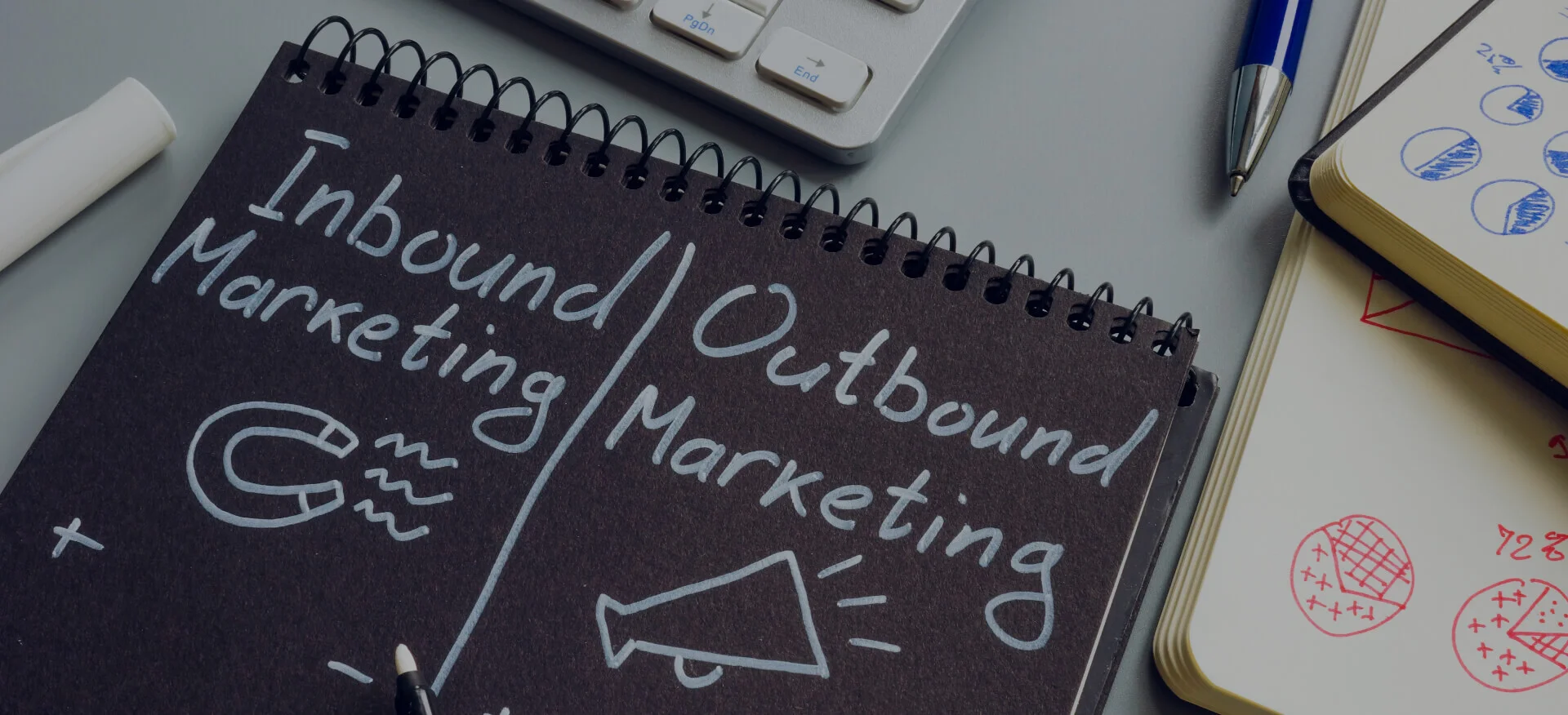In the world of modern marketing, businesses have two primary strategies they can adopt to attract customers:
Both approaches serve the purpose of reaching customers and generating sales, but the methods, philosophies, and overall customer engagement they entail are quite different.
Inbound marketing is a customer-centric approach that focuses on creating content and experiences that attract potential customers.
It aims to provide answers, solutions, and value to prospects through content like blogs, social media posts, and educational resources.
Instead of pushing a message on customers, an inbound marketing strategy seeks to bring customers to the business by offering them something of value.
On the other hand, outbound marketing follows a more traditional approach where businesses push their messages out to a wider audience, hoping to capture the attention of potential customers.
This can include tactics like cold calling, direct mail, TV and radio ads, and email blasts. Outbound marketing is more interruption-based, reaching out to prospects regardless of whether they’ve expressed interest in the business or not.
The debate between inbound vs outbound marketing is often framed as a matter of cost-effectiveness, customer engagement, and the ability to build long-term relationships with prospects.
While seo inbound marketing is known for its effectiveness in engaging modern, tech-savvy customers, outbound marketing continues to have its place, especially for businesses looking to quickly scale or target a broad audience.
Additionally, industries such as oil and gas often benefit from specialized strategies like digital marketing for oil & gas to target specific segments of their market.
In this article, we will delve deeper into both inbound marketing vs outbound marketing, comparing their strategies, advantages, and challenges, as well as offering insights into which might be more suitable depending on a company’s goals, industry, and customer base.
Book Your Free Expert Consultation
Comparing Inbound Vs Outbound Marketing
Inbound vs outbound marketing highlights the contrast between attracting customers through valuable content and interactions versus proactively reaching out to a broad audience through traditional advertising methods.
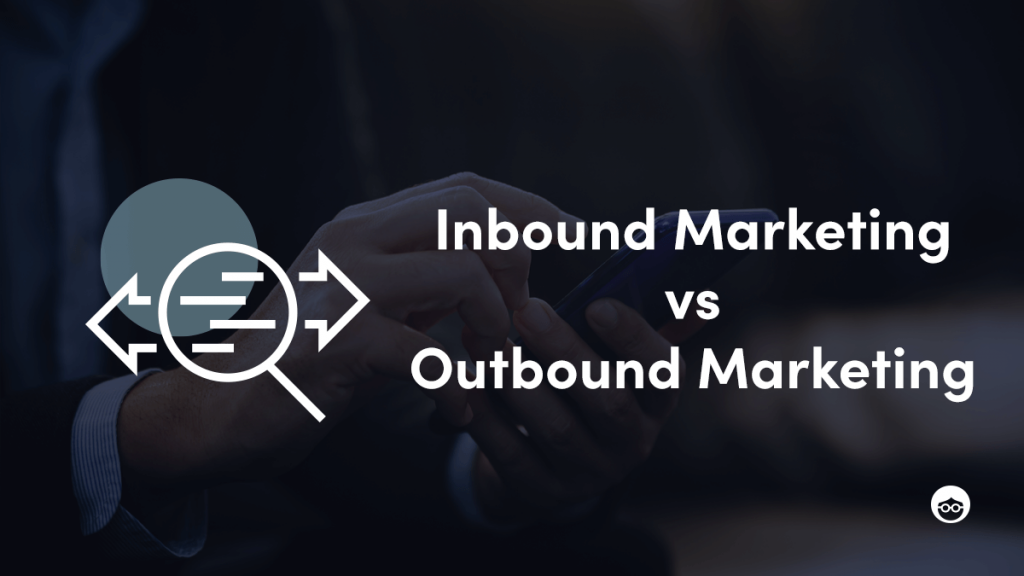
When it comes to what is the digital marketing strategy that tracks users across the web?, seo inbound marketing often uses data analytics and retargeting ads to track user behavior effectively.
| Aspect | Inbound Marketing | Outbound Marketing |
|---|---|---|
| Targeting & Reach | Highly targeted; attracts individuals actively seeking solutions through valuable content. | Broad reach; casts a wider net, often without guaranteed interest or relevance. |
| Cost & ROI | Generally more cost-effective; relies on organic methods and long-term content investment. Results take time to materialize. | Often involves higher upfront costs (e.g., ads, cold calls); can generate quicker results but may have higher cost per lead. |
| Customer Engagement | Builds relationships over time by delivering value and education; customers engage at their convenience. | Tends to interrupt customers with unsolicited messages; can lead to lower engagement and potential negative perceptions. |
| Effectiveness Context | Ideal for businesses aiming to build long-term relationships, provide educational resources, and target informed or niche audiences. | Effective for businesses seeking quick results, broad brand awareness, or targeting customers who may not actively seek out a product. |
| Scalability | Scales with content creation and optimization; requires consistent effort but benefits grow over time with evergreen content. | Scales with budget; increased reach often requires higher ad spend or broader campaigns, with diminishing returns possible. |
| Measurement & Analytics | Easier to track and measure through digital metrics (e.g., website traffic, SEO rankings, conversion rates); data-driven insights. | Harder to measure precise impact (e.g., cold calls, TV ads); relies on broader metrics like impressions or response rates. |
| Customer Trust | Fosters trust through valuable, non-intrusive content; customers feel empowered to make informed decisions. | May erode trust if perceived as aggressive or irrelevant; relies on persuasion rather than education. |
| Content Longevity | Content (e.g., blogs, videos) remains relevant and drives results long after creation, offering sustained value. | Campaigns (e.g., ads, mailers) are often time-bound, with limited shelf life after the campaign ends. |
Understanding Inbound Marketing
Inbound marketing is a customer-centric approach that focuses on attracting potential customers through the creation and distribution of valuable, relevant content.
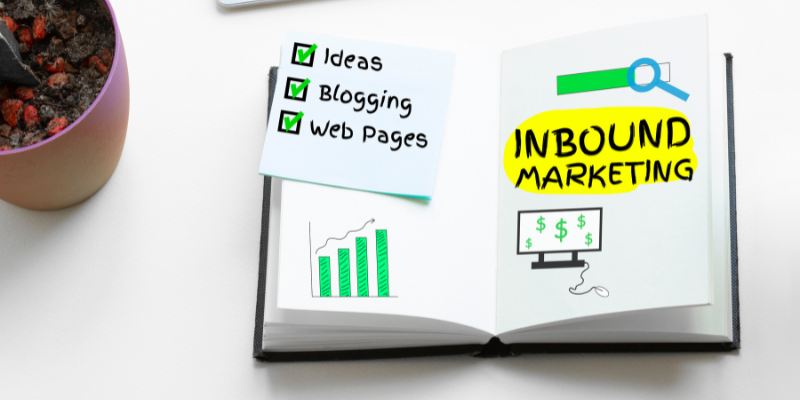
Unlike traditional outbound methods that push messages to a broad audience, an inbound marketing strategy draws individuals in by addressing their specific needs and interests.
This strategy aims to build trust and establish long-term relationships, guiding prospects through their buyer's journey from awareness to decision-making. What is network marketing? often blends with seo inbound marketing strategies when affiliates use content marketing to build trust and create long-term relationships with their audience.
The inbound marketing definition centers on pulling in visitors who seek information, rather than interrupting them. For instance, in 2025, 63% of consumers start their buying process online through searches, making inbound a natural fit for those moments.
Key Components of Inbound Marketing
Inbound marketing is often associated with the following key components:
- Content Creation: The foundation of inbound marketing is content. This can include blogs, videos, podcasts, ebooks, infographics, and social media posts, with advertisement examples often highlighting affiliate products or services to enhance content.
- Search Engine Optimization (SEO): By optimizing content for search engines, businesses increase the chances of their content being discovered by potential customers searching for relevant information. SEO inbound marketing ensures content ranks higher, driving organic traffic.
- Lead Generation: Through content, businesses capture leads by offering valuable resources in exchange for customer information (e.g., email addresses). Using best SEO tools for small businesses can help with generating leads efficiently.
- Lead Nurturing: Once a business captures leads, it uses email marketing, retargeting ads, and other tactics to nurture these leads, gradually guiding them toward making a purchase.
- Analytics and Optimization: Data-driven decision-making is a hallmark of inbound marketing. Businesses use analytics to understand what content resonates with their audience and optimize future efforts.
Best practices for inbound marketing SEO include targeting long-tail keywords that match user intent, such as "inbound marketing examples for small businesses," and ensuring mobile optimization, as 64% of SEO professionals view it as a strong investment. Tools like Google Analytics remain top choices for tracking these efforts.
The Inbound Marketing Approach
Inbound marketing is structured around a series of stages, often referred to as the inbound methodology.
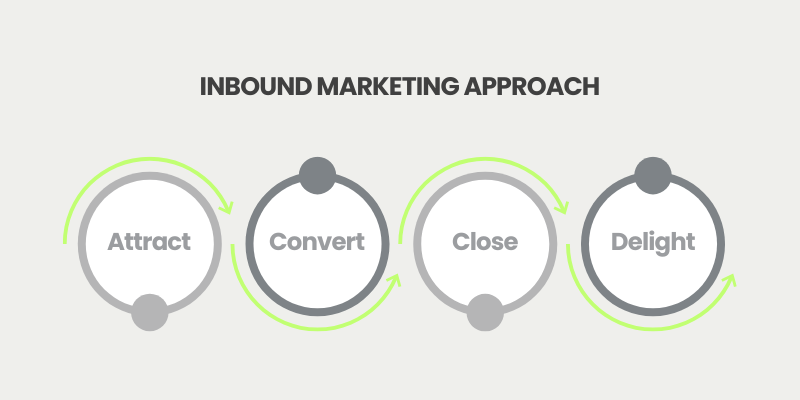
- Attract: The first stage involves attracting potential customers through valuable content, SEO, and social media engagement. The goal is to draw prospects in who are searching for answers or solutions to their problems. Learning how to search for words on a page can enhance your inbound marketing strategy by targeting specific search queries.
- Convert: Once visitors land on a website, businesses aim to convert them into leads by offering something of value in exchange for contact information.
- Close: In this phase, businesses work on nurturing leads through personalized communication, turning them into customers.
- Delight: The final stage focuses on keeping customers satisfied, providing them with exceptional service, and encouraging them to become brand advocates who refer others.
Advantages of Inbound Marketing
Inbound marketing offers a cost-effective, sustainable approach to attracting and retaining customers by providing valuable content that addresses their needs and interests.
- Cost-Effective: Since it focuses on organic content and digital channels, seo inbound marketing can be significantly more affordable than traditional outbound methods. If you're focused on B2B vs B2C, inbound marketing allows businesses to target the right audience more precisely without overspending. Additionally, using Best Local SEO Reporting Tools can help you track the effectiveness of your campaigns and optimize your strategy.
- Targeted: Content can be tailored to a specific audience, ensuring that the right people are engaged with the right message at the right time.
- Long-Term Results: inbound marketing vs outbound marketing strategies often yield long-term benefits as content continues to attract visitors and generate leads over time.
- Customer-Centric: By focusing on providing value, inbound marketing helps to build trust and stronger relationships with customers, which can lead to brand loyalty.
Businesses using inbound save $14 per new lead on average, and 82% of those blogging report positive ROI. For inbound marketing examples, consider BetterVet, which grew traffic and trust by publishing pet care guides optimized for search. Another is Nourish Move Love, whose 2016 recipe still drives steady visitors.
Explore Our Digital Marketing Services!
Understanding Outbound Marketing
Outbound marketing is the traditional method of pushing messages to a broad audience through various channels. In this approach, businesses reach out to potential customers without waiting for them to come to the brand.
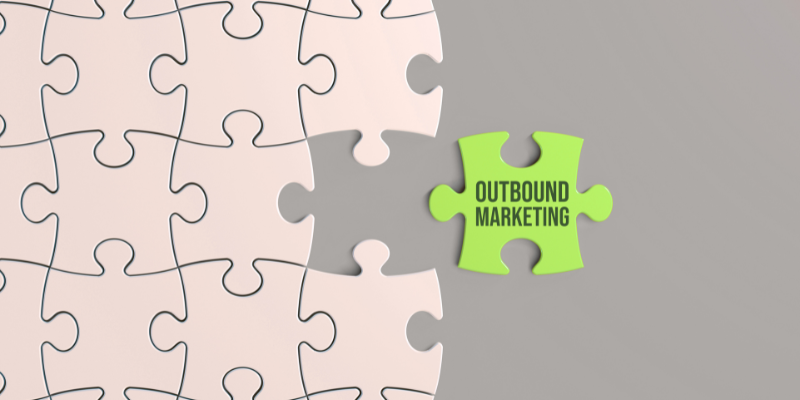
Outbound marketing is interruption-based, as it often forces customers to engage with content they may not have actively sought. This can include TV ads, radio commercials, print ads, direct mail, and cold calling. For example, enterprise SEO can be applied to digital ads to enhance visibility, but a noindex directive may be used for outbound digital ads to control indexing on search engines.
Outbound vs inbound strategies differ in speed: outbound provides quick visibility, as seen in a furniture store's multi-channel campaign of billboards, TV spots, and mail coupons that built familiarity over time.
Key Components of Outbound Marketing
Outbound marketing often involves the following tactics
- TV and Radio Ads: These are mass media channels that broadcast messages to a wide audience, hoping to catch the attention of potential customers.
- Print Ads: Newspapers, magazines, and brochures are traditional forms of outbound marketing that can be used to target local or national audiences.
- Cold Calling: Reaching out to potential customers via phone, even if they haven’t expressed interest, is a classic outbound tactic.
- Direct Mail: Physical mail pieces sent to prospects in an attempt to engage them with a product or service.
- Email Blasts: Sending mass emails to large groups of people, often with unsolicited messages about products or services. Additionally, businesses seeking to enhance their marketing strategies often look for professional assistance in areas such as B2C Web Design Services, which can help make their online presence more effective in reaching potential clients.
The Outbound Marketing Approach
The Outbound Marketing Approach involves proactively reaching out to potential customers through methods like cold calls, direct mail, and advertising to generate leads. It focuses on pushing messages to a broad audience, often interrupting their activities.
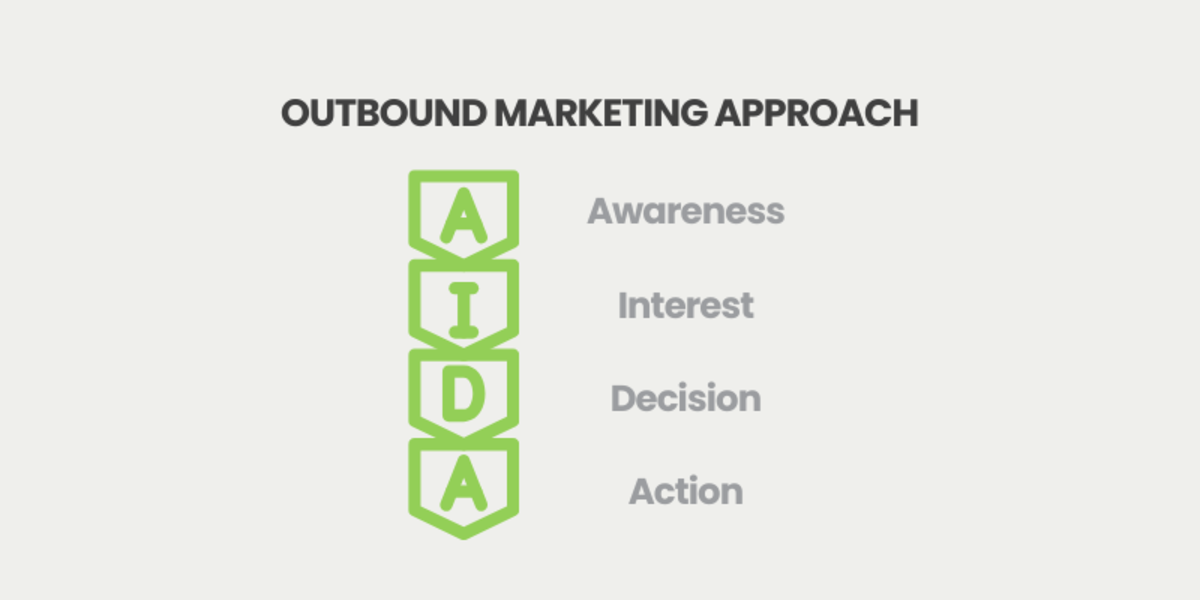
The outbound marketing funnel can be described in a simple, straightforward manner:
- Awareness: The business aims to make potential customers aware of their brand, product, or service through mass media or direct outreach.
- Interest: Once the prospect is aware of the product, outbound marketing tactics aim to spark their interest through catchy offers or promotions.
- Decision: The focus shifts toward persuading the prospect to take action and make a purchase, often with a sense of urgency or exclusive deals.
- Action: The final step involves the customer purchasing the product or service. To enhance the customer journey and streamline processes, businesses often integrate enterprise application development services to create systems that manage customer data and automate marketing workflows, further supporting the conversion process.
In 2025, outbound telemarketing is projected to reach $11.5 billion globally, showing its ongoing role in direct outreach.
Advantages of Outbound Marketing
Outbound marketing enables businesses to reach a broad audience quickly, providing immediate visibility and control over messaging to effectively promote products or services.
- Immediate Results: Outbound marketing often leads to quick results since businesses are directly targeting individuals with messages that require immediate attention.
- Broad Reach: Outbound methods, such as TV ads, can reach millions of potential customers across wide geographical areas.
- Brand Recognition: Outbound marketing methods can help build brand awareness and establish the brand in the minds of a large audience.
- Suitable for Short-Term Goals: For businesses aiming to achieve rapid sales or leads, inbound vs outbound marketing shows outbound can be highly effective. In fact, for companies adopting digital transformation solutions, outbound marketing can be a great tool to get immediate visibility during the transformation process.
However, only 16% of marketers rate outbound leads as high quality, and it generates 50% fewer interactions than digital methods.
Explore Our Content Creation Services!
Which Strategy Is Right for Your Business?
Choosing between outbound marketing vs inbound marketing depends on your business goals, target audience, and available resources.
1. Choosing the Right Strategy
The choice between inbound vs outbound marketing depends on various factors, including your business goals, target audience, industry, and resources. For example, what are five marketing strategies that retailers spend half of their annual budget on? may involve a mix of both strategies.
For businesses with long sales cycles and a need for customer education, inbound marketing may be the right choice.
For those looking for rapid results or targeting a broad audience, outbound marketing might prove more effective.
In 2025, inbound and outbound marketing can work together: use outbound for awareness in new markets, then inbound to nurture those leads, as 84% of marketers still see value in outbound when combined this way.
2. Integrating Both Strategies
Many businesses today are finding success by combining inbound vs outbound marketing, creating a hybrid strategy that maximizes the strengths of both approaches.
By using outbound marketing to generate awareness and inbound marketing to nurture leads, companies can achieve a comprehensive approach to customer acquisition.
This blend addresses gaps in single strategies, like outbound's quick wins paired with inbound's sustained growth, leading to higher overall ROI.
Frequently Asked Questions
What is inbound marketing with an example?
Inbound marketing involves attracting customers through valuable content like blog posts, videos, and social media. An example is a company creating SEO-optimized articles to help potential clients solve problems, which naturally drives traffic and generates leads.
What is inbound and outbound in simple words?
Inbound marketing draws customers in through content and engagement, while outbound marketing involves reaching out to potential customers via methods like cold calling or advertising. Inbound is about attracting, and outbound is about pushing.
Is cold calling outbound or inbound?
Cold calling is outbound marketing because it involves initiating contact with potential customers who haven't expressed interest in the product or service.
Is inbound or outbound easier?
Inbound can be easier for long-term growth as it targets interested prospects, but it requires time and patience. Outbound can deliver faster results, but is more difficult due to the need to engage with uninterested or cold leads.
Conclusion
Both Inbound vs Outbound Marketing strategies offer distinct advantages and challenges. Inbound marketing is a more modern approach that aligns with the preferences of today's consumers, emphasizing value, engagement, and long-term relationship building.
Outbound marketing, while more traditional, can still be effective in reaching a large audience quickly and driving immediate results.
Ultimately, businesses must evaluate their goals, resources, and target audience to determine the best strategy.
By understanding the unique characteristics of each approach and integrating them where necessary, companies can optimize their marketing efforts for long-term success with solutions like Centric to streamline and measure their campaigns effectively.
